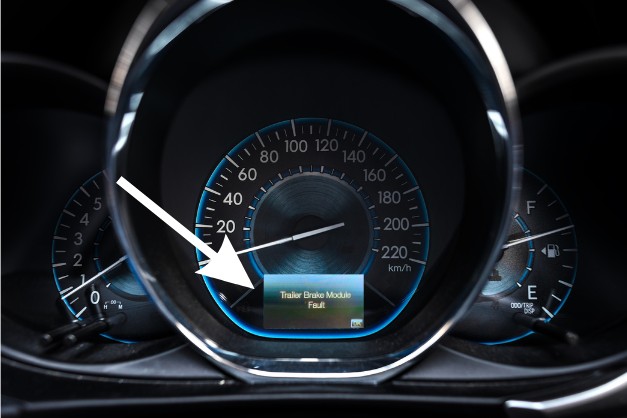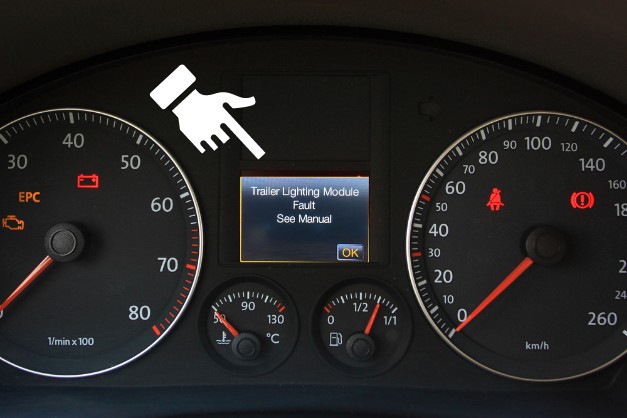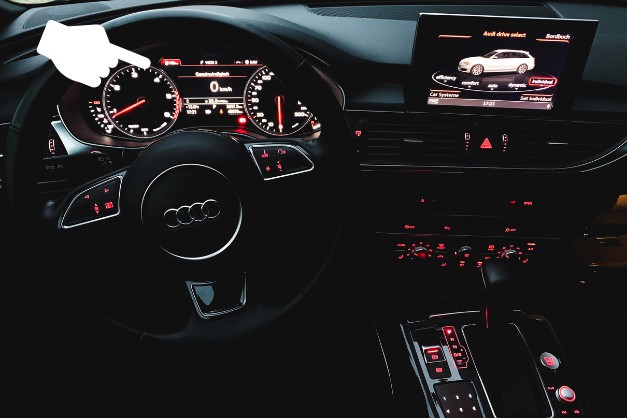Troubleshooting 5-Foremost Ford Trailer Lighting Module Faults & Solutions
The major faults of trailer lighting modules are referring to burnt-out fuses, corroded connections, and damaged wiring.
Since burnt-out fuses can result from overloaded circuits or short circuits, corroded connections are often caused by exposure to moisture and road debris. Damaged wiring can occur due to wear and tear or accidental damage.
Moreover, trailer lighting modules are essential components that allow the lights on a trailer to function correctly.
Besides, the trailer lighting module faults can ruin the entire lighting system on your trailer which can be pretty dangerous to drive the trailer at night.
Therefore, these modules are responsible for managing the electrical signals that power the trailer’s lights, including the brake lights, turn signals, and taillights.
It’s important for you to keep a proper check on these lights and fix them ASAP when you see a fault in these lights.
Ford Trailer Lighting Module (What Does Trailer Fault Mean)

Modules for trailer lighting control the electrical impulses that turn on the lights. Besides these modules are commonly put between the electrical system of the towing vehicle and the lighting on the trailer.
The tow vehicle delivers an electrical signal to the trailer lighting module, which in turn activates the matching lights on the trailer when the driver engages a turn signal or hits the brakes.
Additionally, the electrical signals are properly controlled by trailer lighting modules as indicated in the Ford trailer wiring diagram, preventing any harm to the tow vehicle’s electrical system or the trailer’s lights.
The benefits of using a trailer lighting module include:
Enhanced Safety:
By ensuring that all of the trailer’s lights are functioning properly, a trailer lighting module can significantly enhance safety on the road.
This is especially important at night or in low visibility conditions, as other drivers will be better able to see the trailer and react accordingly.
Improved Electrical System Protection:
Trailer lighting modules protect the tow vehicle’s electrical system by regulating the electrical signals sent to the trailer.
Without a module, excessive electrical current could damage the vehicle’s electrical system, leading to expensive repairs.
Easy Troubleshooting:
If an issue arises with the trailer’s lights, a trailer lighting module can make troubleshooting much easier.
It is simpler to identify and fix any potential flaws when all of the electrical connections are in one central area.
Most Common 5-Key Trailer Lighting Module Faults

Trailer lighting modules are subject to a range of faults that can cause the lights on a trailer to malfunction or stop working altogether. You cannot analyze this kind of fault before it occurs. When it does, you have to be keen on a few factors.
Generally, the fuses can be problematic and you have to face problems for hours. Otherwise, sometimes it is possible that your cables are old or corroded which might be causing the issue.
But you can always look for other indicators too.
Here are five of the most common trailer left turn lamp faults to help you get the idea:
1. Burnt-out Fuses:
Burnt-out fuses are a common cause of trailer lighting module defects. Fuses can burn out due to overloaded circuits or short circuits caused by damaged wiring.
When a fuse burns out, the lights it powers will stop working, so it is important to replace any burnt-out fuses as soon as possible.
2. Corroded Connections:
Corrosion is a common problem in the electrical connections of trailers, especially in areas with high humidity or near bodies of saltwater. Hence, it can cause the electrical signals to weaken or fail, resulting in dim or non-functional lights.
3. Failed Trailer Lighting Module:
In rare cases, the trailer lighting module itself may fail, resulting in complete or partial failure of the trailer lighting system. This can occur due to manufacturing defects or electrical component failures.
If all other potential causes of faults have been ruled out, the trailer lighting module should be inspected and replaced if necessary.
4. Damaged Wiring:
Over time, wear and use or inadvertent damage can cause the wiring in a trailer to deteriorate. However, this can cause the electrical signals to become disrupted or even lost altogether.
In some cases, the wiring may need to be repaired or replaced to fix the fault.
5. Faulty Ground Connections:
Trailer lighting modules rely on a good ground connection to function correctly. If the ground connection is weak or faulty, the lights on the trailer may not work at all or may work intermittently.
Ground connections can become corroded, loose, or damaged, causing faults in the trailer lighting system.
Ford trailer module faults can be caused by a range of issues, including burnt-out fuses, corroded connections, damaged wiring, faulty ground connections, and failed trailer lighting modules.
The trailer lighting system can benefit from routine maintenance and inspections to help avoid these defects from developing and to make sure the trailer lights operate correctly and safely while traveling.
How to Fix the Trailer Lighting Module Faults in 4-Steps

Fixing trailer lighting module imperfections can be a simple process, depending on the severity and cause of the fault. Sometimes, a small fault can become a bigger problem.
And it might take up your hours to fix the issue. This is why you must know an easy fix to solve the problem on your own.
Here are four steps to fix trailer lighting module drawbacks:
Step 1: Diagnose the Fault:
The first step in fixing a trailer lighting module fault is to diagnose the cause of the issue.
This can involve inspecting the trailer’s lights, electrical connections, and wiring to determine which component is causing the fault.
Step 2: Repair or Replace Faulty Components:
Once the fault has been identified, the next step is to repair or replace any faulty components.
This can involve replacing burnt-out fuses, cleaning corroded connections, repairing damaged wiring, or replacing a faulty trailer lighting module.
Step 3: Test the Trailer Lights:
After any faulty components have been repaired or replaced, the trailer lights should be tested to ensure that they are functioning correctly.
This can involve connecting the trailer to a tow vehicle and testing the lights with the vehicle’s electrical system.
Step 4: Perform Ongoing Maintenance:
To prevent the lighting module faults from occurring in the future, it is important to perform ongoing maintenance on the trailer’s lights and electrical connections.
This involves regularly cleaning and inspecting the connections, as well as replacing any worn or damaged components.
In short, fixing the trailer lighting module can be a straightforward process that involves diagnosing the fault, repairing or replacing any faulty components, testing the lights, and performing ongoing maintenance.
By taking these steps, it is possible to keep a trailer’s lights functioning correctly and safely while on the road.
The Bottom Line
Eventually, trailer lighting module faults can be a frustrating and potentially dangerous issue for trailer owners.
Furthermore, this kind of problem can be hazardous for other drivers coming in at high speed at night. It makes it hard to see a heavy vehicle without lights on the road.
Regular inspections, cleaning, and maintenance can go a long way in preventing faults while diagnosing and repairing or replacing faulty components can quickly fix any issues that do arise.
With the right knowledge and maintenance, trailer owners can enjoy the benefits of a reliable and safe trailer lighting system for years to come.

